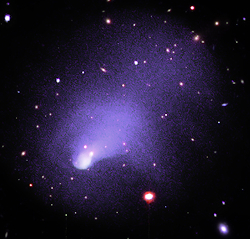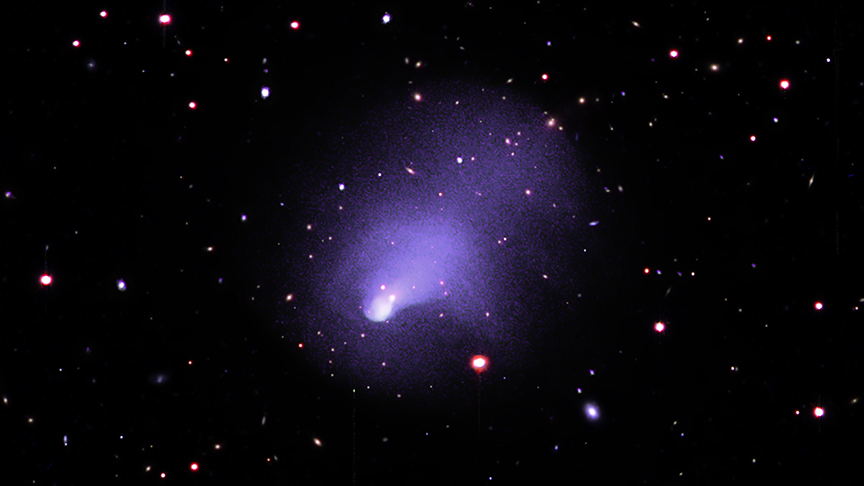The basic building blocks of Universal structure are
clusters of galaxies, groups of hundreds of galaxies bound by the gravity of their dark matter, their intracluster gas, and (to a minor extent) the stars and gas contained within the individual galaxies. Galaxy clusters grow and evolve by merging together,
titanic collisions that produced large scale shocks in intergalactic space. Interestingly, because of the low density of intergalactic space, these collisions are actually "
collisionless", meaning that the chance of one atom in the shocked gas colliding with another is extremely small. Instead of atomic collisions, changes in temperatures and densities along the shock front are produced by
electromagnetic instabilities within the plasma itself. Such collisionless shocks are common in space and occur over wide range, from the
heliosphere around our solar system to the collision of winds between binary stars, to supernovae and, on the largest scales, mergers of galaxy clusters. The temperatures of the shocked gas can rise to tens of millions of degrees or higher, producing large amounts of X-rays, so X-ray observations are an important way to study these cosmic collisions. The image above shows a deep (23 days long)
Chandra X-ray Observatory image (in purple) of Abell 2146, a merger between two clusters of galaxies, superimposed on an optical image from the
Subaru telescope (located at the summit of Maunakea, Hawaii). As the labels on the image show, cluster 2 is moving towards the bottom left of the image, plowing through cluster 1. The Chandra X-ray image shows the hot gas produced by the collision and nicely defines the boundaries of the shock fronts stretching for more than a million light-years ahead of and behind the merger. This observation represents the first time such a merger shock could be studied in detail, and provides important clues to the physical processes by which gas is compressed and heated by cosmic shocks on a wide range of spatial scales.
 HEAPOW: Revealing a Shocking Merger (2022 Jun 27)
HEAPOW: Revealing a Shocking Merger (2022 Jun 27)

